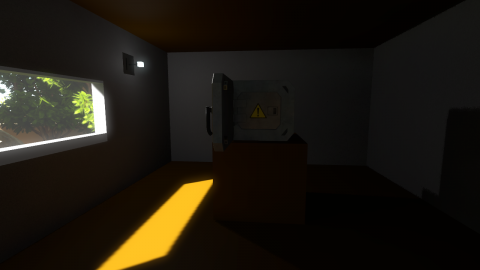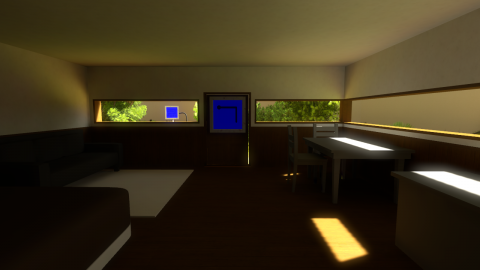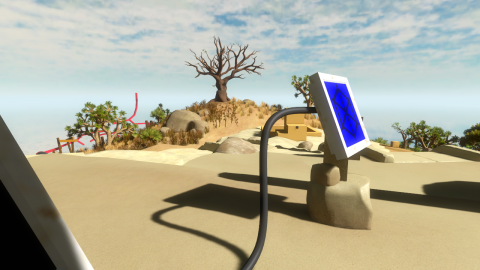Approaching the nondescript front gate of Jonathan Blow’s foggy hilltop San Francisco apartment, I had very little idea of what to expect from The Witness. This was the next game from the man who very nearly single-handedly conceived and executed Braid, a game that, if not the work of actual genius, was at the very least very, very clever. So even though expectations were nonspecific, they were also fairly high. Outside of a surreptitious showing at PAX, I hadn’t heard of anyone beyond Blow’s circle even laying eyes on the game. Even in my correspondences with Blow leading up to our extended gameplay demo, he had been reluctant to provide more detail than to say it was an “exploration-based puzzle game.” I certainly know I wasn't expecting something that could be sloppily, and perhaps unfairly and reductively described in shorthand as a “modern Myst.” But, much like how Braid could be summed up as “Mario with time manipulation” this is really just the start of the conversation.

Speaking about the game, Blow’s not shy about the comparison to something like Myst, or any number of adventure games driven by contextual puzzle solving, but he’s also very vocal about what he finds distasteful of games both old and new. Speaking of the adventure game format, he takes issue with puzzle designs that require you to, somehow, read the intent of the game designer, citing the infamous cat-hair mustache puzzle from Gabriel Knight 3 as a particularly egregious example. Even in Myst, going from one puzzlebox to the next, there’s rarely any consistent logic. This, he feels, is an unfair way to gin up some sense of challenge in your game. Which is not to say Blow doesn't appreciate a good cerebral challenge, something he feels is grossly lacking in modern games. Rollercoasters are fun, but there’s room for something more thoughtful, too.
So! What is The Witness?
The game starts with you, an anonymous, first-person avatar in a spartan, polygonal room, facing a door. On this door is a screen with a simple path drawn on it. Using the analog stick to to trace along this path, the door opens, and you enter a small, gated courtyard, with several more screens, now with slightly more complex paths on them, which appear to be powering the gate. Solving these panels in a similar fashion opens you up to the majority of the mysterious, peculiarly vacant island where the game takes place. There are a number of unique geographical features, as well as structures of seemingly various age, but what deliberately sticks out are these panels, which the island is littered with.

Discovering the logic behind these panels, which evolves and changes as you explore the various areas of the island, is the heart of The Witness, but it’s not a simple matter of trial and error. The panels are often grouped in sets of five, and are designed to teach you a new set of rules by which subsequent panels must be solved. Though certain regions require you to solve a set of panels before exploring them further, the island is generally open for you to explore. This can often lead you to panels which look familiar enough, but which abide by a set of rules that you’ve not yet been introduced to. If you find yourself stuck, the game encourages you to move on and revisit particularly puzzling panels once you’re better equipped.
New rules and elements are introduced, but the basic format of the panels themselves--the tracing of a line through a square grid--never changes. The abstract, seemingly simple nature of these panels can make the evolving subtleties of the underlying logic difficult to describe. Frankly, I wouldn’t want to explain them in detail if I could, as discovering the solutions on your own is the very thing that makes the experience so satisfying.
This is where the greatest similarities between The Witness and Braid are most apparent. As you learn the different rules by which the panels are governed, you also start to build up certain assumptions and expectations about how a panel should be approached, something that the game then turns against the player. As an admittedly, frustratingly vague example, the expectation that all of the information you need to solve a specific panel would be contained within that panel is something that The Witness plays with liberally. Suffice it to say, The Witness rewards a limber mind, and the game preys on the psyche's tendency to focus on what's in front of it, though it always puts the solution in plain sight--you just have to know what to look for.

Like Braid before it, The Witness seems like a heavy vessel for Blow’s specific brand of amorphic, perhaps autobiographical narrative style, though in my time with the game, I was unable to make heads or tales of the cryptic audio recordings I found hidden across the island. Like everything else about The Witness, this seems very deliberate.
Though Blow said that the puzzles that we saw in The Witness are essentially finished, the game is still a year away, time that Blow repeatedly stated would be spent “hitting the game with the production stick.” Which is to say that just about everything that we saw from specific level geometry to voice work and, presumably, the stiff, robot-shaped shadow your anonymous avatar casts, is all placeholder, so don’t put too much stock in the austere appearance of the early screenshots provided.
Appearances aside, I came away surprised and impressed by my experience with The Witness, though I also know that, on a certain level, words aren’t quite enough to describe the contradiction between the simplicity of the form and the complexity of the execution, as well as the subsequent satisfaction of grasping the solution. Jonathan Blow seems to know this, too.









